 [With the debate over income inequality raging as the presidential campaign lurches into full swing, and virtually all current and former Republic Party presidential candidates — Donald Trump, Ted Cruz, Marco Rubio, John Kasich, Jeb Bush — calling for the curtailing or elimination of the U.S. Department of Agriculture’s Supplemental Nutrition Assistance Program (SNAP) program, I thought I’d recount my own relatively recent experiment with the food budget allocated under SNAP, known colloquially as food stamps. (So-called, for those of the younger persuasion, because they originally came in the form of tear-out coupons in little booklets. Nowadays your monthly allotment gets transferred electronically to a debit card. For more about the current program, visit the USDA site or FoodStamps.org.)
[With the debate over income inequality raging as the presidential campaign lurches into full swing, and virtually all current and former Republic Party presidential candidates — Donald Trump, Ted Cruz, Marco Rubio, John Kasich, Jeb Bush — calling for the curtailing or elimination of the U.S. Department of Agriculture’s Supplemental Nutrition Assistance Program (SNAP) program, I thought I’d recount my own relatively recent experiment with the food budget allocated under SNAP, known colloquially as food stamps. (So-called, for those of the younger persuasion, because they originally came in the form of tear-out coupons in little booklets. Nowadays your monthly allotment gets transferred electronically to a debit card. For more about the current program, visit the USDA site or FoodStamps.org.)
Part 2 of this post appears below; for Part 1, click here. — A. D. C.]
•
Eating Well on Food Stamps (cont’d)
I discovered, to my considerable surprise, that, while staying within the average SNAP allotment ($140 per month) plus an additional $10 weekly, from January 15-May 15, 2011, I ate very well during my four months of taking the “food stamp challenge”: nutritious, filling, healthy, tasty, and varied food. It did not require me to vary my shopping habits much; I shopped where we usually shop, and bought what we usually buy. (I’d have done even better if I’d supplemented what I bought with what I would have qualified for at the food pantries and City Harvest. See Part 1 for details.)
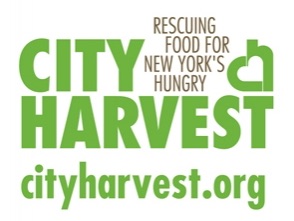 While I did not skimp on quality, I did consider price over brand-name recognition, unless the items with the high-profile brand had a comparable sale price and similar ingredients. Cashew halves and pieces, dried chickpeas, canned diced tomatoes, and angel hair pasta don’t vary much from one manufacturer to another. The price difference between a famous brand and an unfamiliar or house brand often proved considerable, with the higher price no guarantee of better quality. In fact, I found a surprising variety of inexpensive items from makers I’d never heard of — canned, frozen, and packaged in sealed plastic — containing no harmful additives, sometimes even vegan, and as good or better than their more expensive counterparts.
While I did not skimp on quality, I did consider price over brand-name recognition, unless the items with the high-profile brand had a comparable sale price and similar ingredients. Cashew halves and pieces, dried chickpeas, canned diced tomatoes, and angel hair pasta don’t vary much from one manufacturer to another. The price difference between a famous brand and an unfamiliar or house brand often proved considerable, with the higher price no guarantee of better quality. In fact, I found a surprising variety of inexpensive items from makers I’d never heard of — canned, frozen, and packaged in sealed plastic — containing no harmful additives, sometimes even vegan, and as good or better than their more expensive counterparts.
Beyond eggs and soy milk, little of it was organic; the neighborhood doesn’t offer many options in that regard. (See Part 1 for details.) However, if I had prioritized that, I had Tastebud’s, the health-food store, a bus trip away. Even in a neighborhood that offers few food-shopping options, I did get fresh meat and seafood, fresh produce, fresh dairy products, and fresh hearth-baked bread. I used olive oil for cooking and salad dressings.
The makers of the few frozen meals I bought for convenience’s sake (since I was cooking for one during this period) — stir-fried chicken and shrimp dinners, potstickers — used only the plain ingredients (the vegetables, the rice or pasta, the meat or seafood, etc.), with no additives. Same for the makers of the half-dozen packages of frozen vegetables I bought to toss into soups, the frozen samosas and burritos and pierogies I used for quick lunches, the frozen french fries and sweet-potato fries I made for hot snacks, the frozen fruits I used to make an occasional pie.
For munchies I opted, as usual, for popping corn that I make myself in a 30-year-old thrift-shop Hamilton Beach Popaire 4 hot-air popper; a mix of chili-flavored peanuts, corn nuts, roasted soybeans, and wasabi-flavored soybeans; the occasional $1 bag of Pennysticks pretzels; and assorted dried fruits — raisins, cranberries, dates. In addition to using a combination of unsugared cereals — corn flakes, puffed rice, toasted oats — topped with a banana and soy milk, for some breakfasts, now and then I’d fill a small bowl with the same cereal mix dry, for nibbling at my desk.
I satisfied my occasional urge for sweets with apples and a bit of dark chocolate; some orange or raspberry sherbet ($1 per pint at Deals); an occasional chocolate cake made from a boxed mix (no frosting, frozen blueberries added); and the above-mentioned homemade fruit pie. This represents my closest approach to anything resembling “junk food.”
In short, by combining comparison shopping with home cooking and attention to basic dietary needs I had my usual three meals a day, with nutritious, delicious food, plus snacks, on $45 a week. I should add, as a qualifier, that I had long since become accustomed to eating healthily in terms of the quantity and quality of the food and beverages I consume, so that this experiment, with its restrictions, did not require any radical change in my diet, or my menu. I’ve always done comparison shopping, so it didn’t require me to modify my purchasing habits (though it did acquaint me with some brands, and food outlets, that had passed under my radar previously).
That may not hold true for many, even most, SNAP recipients, who might need to make dramatic adjustments to their nutritional routines in order to stay within that budget. However, I don’t consider the substitution of tofu for eggs or beef once or twice a week a serious imposition on anyone.
•
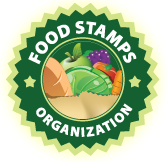 This brings me to the exclusion of prepared foods from the list of what you can buy with SNAP benefits, and objections to that restriction, such as that voiced by “Frankie,” the homeless NYC man in Michael Brendan Dougherty’s “Soylent food is here — and it is tyrannical” (in The Week, May 14, 2014.)
This brings me to the exclusion of prepared foods from the list of what you can buy with SNAP benefits, and objections to that restriction, such as that voiced by “Frankie,” the homeless NYC man in Michael Brendan Dougherty’s “Soylent food is here — and it is tyrannical” (in The Week, May 14, 2014.)
For a few dollars more than what it would cost to buy a ham and cheese hero sandwich at a deli in NYC — around $6.50 — my local supermarket will sell you a loaf of Italian bread, 1/2 pound each of ham and American or other cheese (Swiss, provolone), a small container of mustard or mayonnaise, a jar of pickles, and a tomato. Enough to make two or three such sandwiches. The deli sandwich wouldn’t qualify as a SNAP purchase, but the sandwich makings from the supermarket would.
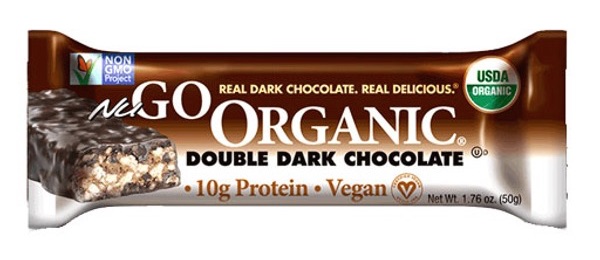 In addition to the above, you can buy protein bars and shakes; milk and yogurt and cheese; fruit juices and fresh or dried fruits; vegetable juices and fresh or dried vegetables; nuts and sunflower seeds; almond milk and coconut milk; sandwich meats, meat jerky, smoked meats; assorted ready-to-eat soy products (soy milk, soft tofu, tempeh, “soy cheese” slices); whole-grain breads, crackers and cereals. So, with a SNAP allotment, you can purchase a wide range of foodstuffs that are either ready to eat or require little prep and no cooking (unless you consider making your own sandwich a culinary task). You can eat healthily; you can certainly maintain a vegetarian diet, even organic; you can actually eat vegan and gluten-free.
In addition to the above, you can buy protein bars and shakes; milk and yogurt and cheese; fruit juices and fresh or dried fruits; vegetable juices and fresh or dried vegetables; nuts and sunflower seeds; almond milk and coconut milk; sandwich meats, meat jerky, smoked meats; assorted ready-to-eat soy products (soy milk, soft tofu, tempeh, “soy cheese” slices); whole-grain breads, crackers and cereals. So, with a SNAP allotment, you can purchase a wide range of foodstuffs that are either ready to eat or require little prep and no cooking (unless you consider making your own sandwich a culinary task). You can eat healthily; you can certainly maintain a vegetarian diet, even organic; you can actually eat vegan and gluten-free.
You can also buy hundreds of nutritious items small enough to fit easily into a backpack. Try this experiment: Step into your local health-food store and fill up an imaginary cart with $189 worth of portable, ready-to-eat items that require neither cooking nor refrigeration.
In short, it’s false and misleading (deliberately so, in my opinion) to suggest, as too many food-stamp advocates do, that SNAP $$ can be used only for foods that need cooking.
The one restriction that’s problematic if you’re homeless is that you can’t buy anything hot and ready to eat — especially important in colder weather. You can buy all sorts of frozen, canned, and packaged meals that require access to (at least) a microwave oven and/or a toaster oven and/or a hot plate, any of which make a wide range of additional food options available. (The alternative, a small camping stove fueled by either canned heat or a butane/propane canister, doesn’t make sense for anyone living on the street; it’s one more thing to shlep, while also raising the risk of fire.) But you can’t use your SNAP benefits for a bowl of soup or a plate of pasta or — Frankie’s favorite, when he’s in the money — an extravagant steak dinner.
The logic here: If you allow the use of SNAP $$ for prepared foods, you thereby subsidize the food-prep industry and the considerable markup (attributed to labor and other expenses) between the cost of foodstuffs themselves and what you pay for them in a deli or Korean grocery store or pizza parlor or fancy restaurant. Per my above experiment, at home I can cook up a pound of pasta and 30 ounces of tomato sauce with ground chuck, onions, and mushrooms for $5. With a few slices of bread and low-cost side salads, that’ll make 2-3 substantial meals. The pizza store a few blocks away will serve me one plate of comparable pasta for $7.99. Why should the taxpayers underwrite sparing me the inconvenience of fixing my own dinner?
 I agree with the logic, and acknowledge the impossibility of basing a supplemental-nutrition program on the logistical problems of the homeless. The logical solution, then, doesn’t involve allowing homeless SNAP users to squander that support on junk food at McDonald’s and KFC, but instead makes it possible for them to heat up assorted forms of MREs without signing themselves into a shelter or heading for a soup kitchen. I don’t know how we accomplish that, but with all the inventive energy currently directed at solving third-world problems related to light, water, electric energy, heat, etc., I think someone — maybe some 15-year-old genius, of which we suddenly seem to have a plethora — will figure it out.
I agree with the logic, and acknowledge the impossibility of basing a supplemental-nutrition program on the logistical problems of the homeless. The logical solution, then, doesn’t involve allowing homeless SNAP users to squander that support on junk food at McDonald’s and KFC, but instead makes it possible for them to heat up assorted forms of MREs without signing themselves into a shelter or heading for a soup kitchen. I don’t know how we accomplish that, but with all the inventive energy currently directed at solving third-world problems related to light, water, electric energy, heat, etc., I think someone — maybe some 15-year-old genius, of which we suddenly seem to have a plethora — will figure it out.
•
Summing up: Given the astonishing amount of food we waste outright (as much as 40 percent in the U.S. annually), coupled with the stupendous subsidies we provide to agribusiness large and small with taxpayer money ($14 billion is the low estimate), the concept of ensuring that poor and homeless people, as well as the unemployed and working-class people with low incomes, especially children, can count on sufficient healthy food to eat seems like a no-brainer. I have heard no argument against this that I consider rational.
![]() According to the Congressional Budget Office, in 2011 approximately 1 in 7 U.S. residents received SNAP benefits, at a cost of $72 billion. If we can afford to allow the Pentagon to piss away $43 billion on a useless gas station in Afghanistan, bail out banks that are “too big to fail,” and provide endless streams of welfare to the rich, how can we cavil at $72 billion to nourish the nation’s hungry for a year?
According to the Congressional Budget Office, in 2011 approximately 1 in 7 U.S. residents received SNAP benefits, at a cost of $72 billion. If we can afford to allow the Pentagon to piss away $43 billion on a useless gas station in Afghanistan, bail out banks that are “too big to fail,” and provide endless streams of welfare to the rich, how can we cavil at $72 billion to nourish the nation’s hungry for a year?
One out of every seven Americans suffers from sufficient “food insecurity” to seek and receive SNAP benefits; that’s 45 million people. As Bob Marley usefully reminds us, “A hungry mob is an an angry mob.” And the minds of an angry, hungry mob inevitably turn to the prospect of eating the rich. With their let-’em-eat-cake attitudes, the Republic Party threatens 45 million people with plans to take the food out of their mouths, while derogating them for their inability to feed themselves. That’s a powerful image of themselves for the GOP to project. Let’s see how well it serves them on November 8.
(Part 1 I 2)
[Note, March 26, 2016: For contrast, and a glimpse of how the other half lives, see Alina Dizik’s March 15, 2015 BBC feature about hiring a “personal chef” to do all your cooking for you right in your own home. “The cost? $790 per week, plus food or kitchen essentials,” Dizik writes, and that’s just for 6 dinners for “a single dad to an eight-year-old son.” Dizik and BBC’s improbable title for this article: “Yes, you can afford a private chef.”]
•
This post supported by a donation from Tim Greyhavens.
•
 Special offer: If you want me to either continue pursuing a particular subject or give you a break and (for one post) write on a topic — my choice — other than the current main story, make a donation of $50 via the PayPal widget below, indicating your preference in a note accompanying your donation. I’ll credit you as that new post’s sponsor, and link to a website of your choosing. Include a note with your snail-mail address (or email it to me separately) for a free signed copy of my 1995 book Critical Focus!
Special offer: If you want me to either continue pursuing a particular subject or give you a break and (for one post) write on a topic — my choice — other than the current main story, make a donation of $50 via the PayPal widget below, indicating your preference in a note accompanying your donation. I’ll credit you as that new post’s sponsor, and link to a website of your choosing. Include a note with your snail-mail address (or email it to me separately) for a free signed copy of my 1995 book Critical Focus!


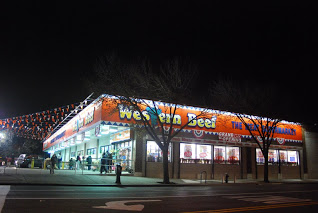
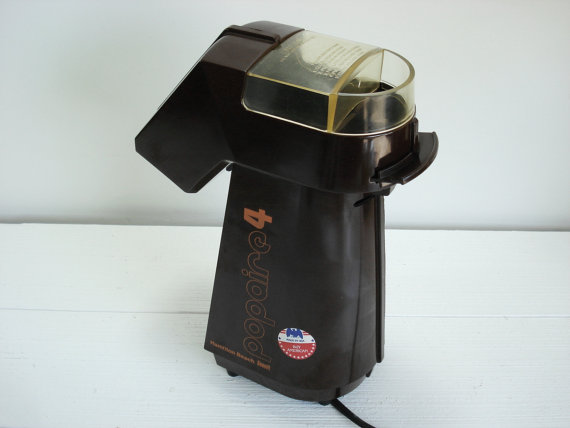
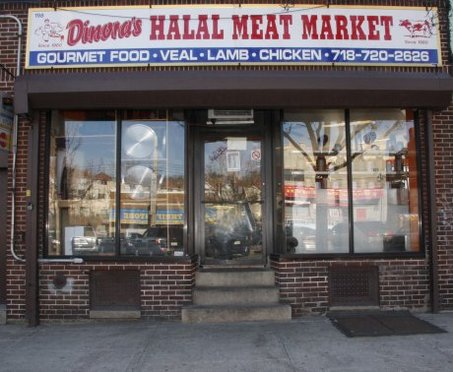
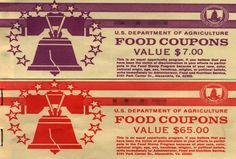




Allan,
Great admiration for your diligence and success with your four month SNAP experiment. With calculations of monthly, plus weekly additions, that represents $2880 for the time period. I am amazed it worked as well as you say and with little alteration from your shopping practices.
An area high school worked on a similar theme and produced a recipe booklet. I was saddened to see frozen foods as standard prep ingredients, etc. It prompts me to look more carefully at my own expenditures.
You do make some very good points relative to your personal health, food choices, prep skills and willingness. Sadly an age and gender cohort who has lived in poverty for most of those years is far less likely to be as healthy, as skilled, as willing. You acknowledge some of that relative to disease, but I believe lifelong poverty complicates the picture even more.
I cannot understand how you calculated my food expenditures at $2880 for the four-month period I described. As I spelled out in Part 1 of this post, I took the then-average monthly SNAP allotment of $140 and augmented it (because, like many SNAP recipients, I work and generate income) by adding $40 a month. That gave me a total of $180 monthly with which to work, an average of $6 per day. Over that four-month period, therefore, I fed myself well on a total of $180 x 4 = $720 — a mere 1/4 of your calculation. I’d have eaten like a king on the amount you propose, $24 per day.
I’ve cooked for myself (and for members of my family and friends) since I left home 52 years ago. Aside from that experience, hardly unusual (certainly common among low-income individuals), I have no “prep skills” beyond those acquired through access to information about nutrition and cooking that’s readily available free to all via word of mouth, newspapers, magazines, cookbooks, the public library, radio, tv, and the internet.
I used commonly available ingredients, a few standard kitchen utensils, and basic, familiar cooking equipment. Roughly 95 percent of what I made and ate during my test period got cooked on a two-burner range or in a toaster-oven, hardly exotic methods.
While I didn’t and don’t use frozen foods as “standard prep ingredients” myself, I did and do appreciate both their convenience and their remarkably high present-day quality. In my opinion, many flash-frozen items offer high nutritional and taste value in relation to their cost.
If we leave out the almost 50 percent of SNAP beneficiaries who are children, and therefore most likely have someone else cooking for them, we have some 25 million adult SNAP recipients. Certainly they have not all experienced “lifelong poverty.” Indeed, statistics show that many are relatively new to the SNAP program.
Whatever rationale you choose to apply to poor food choices — any combination you like of age, race, gender/gender persuasion, education, personal health, culture — this fact remains: On the average SNAP allotment one can purchase sufficient food to provide three balanced, nutritious meals per day, plus healthy snacks and drinks.
That this might require some self-education re nutrition and diet and cooking, plus some consequent adjustment of one’s diet and shopping/eating patterns, does not strike me as an undue imposition on anyone. To the contrary, I consider it empowering and liberating. If I may paraphrase, give a person a good meal and you feed him or her for an evening; teach him or her to prepare good meals and you feed that person for a lifetime — especially if you also provide the foodstuffs with which to make his (or her) meals.
I may not represent the typical SNAP recipient with my experiment, but I’m not all that untypical: 23.6 percent are non-disabled adults age 18-49 in a childless home (that’s me, except for the age), an additional 8 percent are elderly (that’s me), and 49.5 percent are white (me again).
So my ability to nourish myself comfortably on that budget involved no special “skills.” I have survived on a marginal income most of my adult life. Maintaining basic physical health (in terms of exercise, general physical condition, etc.) requires neither money nor advanced education. As for those whom you describe as less “willing” than I to take care of themselves, that certainly does not automatically correlate with age, race, gender, income, etc., and I can’t muster much sympathy for them.